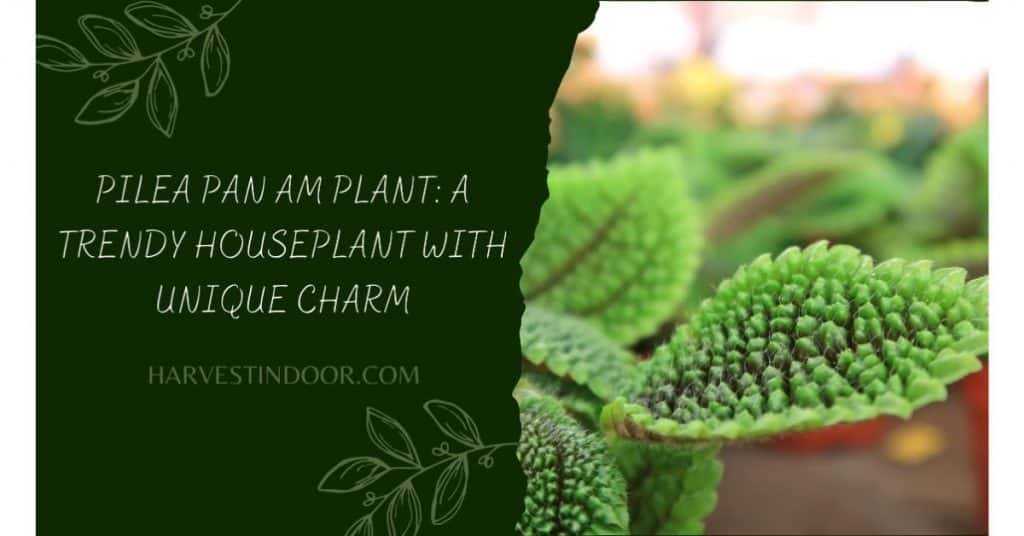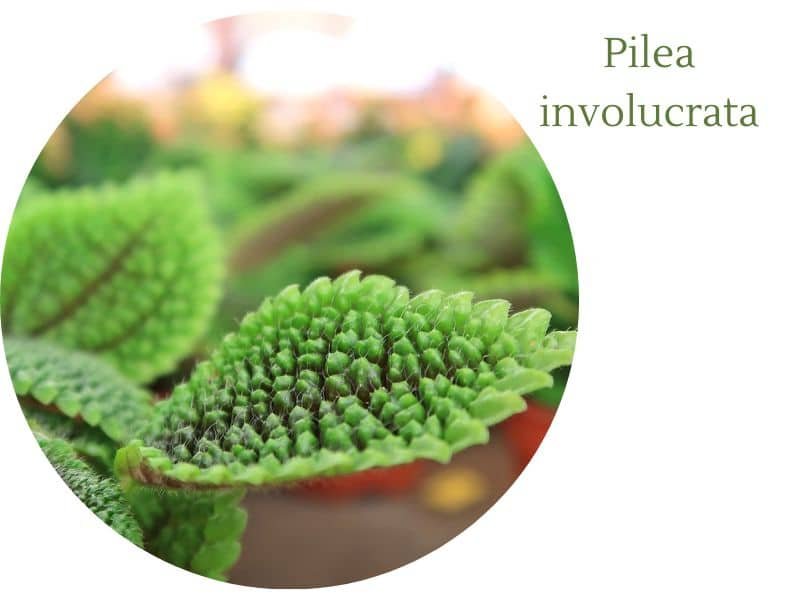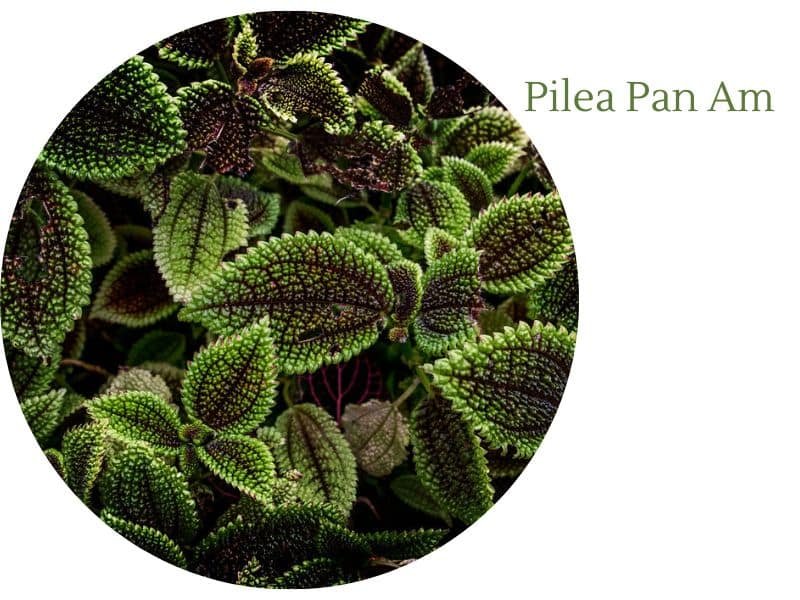Are you looking to add a touch of greenery and charm to your indoor space? Look no further than the Pilea Pan Am plant. This trendy houseplant has been captivating plant enthusiasts with its delicate leaves and distinct features. In this article, we will delve into the world of Pilea Pan Am, exploring its characteristics, care requirements, common issues, and the benefits it brings to your living environment.

Table of Contents
Introduction
Indoor plants have become increasingly popular in recent years, not only for their aesthetic appeal but also for the numerous benefits they offer. Pilea Pan Am, also known as Pilea involucrata or the friendship plant, is a unique and eye-catching addition to any plant lover’s collection. Its lush foliage and low maintenance requirements make it an ideal choice for both beginner and experienced plant enthusiasts.
What is Pilea Pan Am Plant?
Pilea Pan Am is a trailing plant native to Central and South America. It belongs to the Urticaceae family, which also includes other popular houseplants like the Pilea peperomioides (Chinese money plant). Pilea Pan Am features small, round leaves that cascade down its delicate stems, creating a stunning visual display. Its vibrant green foliage adds a refreshing touch to any space, making it a sought-after choice for interior decoration.

Features and Appearance
Pilea Pan Am, also known as Pilea involucrata or friendship plant, possesses distinct characteristics that make it an appealing houseplant. Let’s delve into its foliage, flower, and height to get a clearer picture of its appearance.
Foliage: The foliage of Pilea Pan Am is the main highlight of this plant. It features small, round leaves that are reminiscent of tiny lily pads. The leaves are typically a vibrant shade of green, adding a refreshing pop of color to any indoor space. The glossy texture of the leaves gives them a lustrous sheen, enhancing their visual appeal.
The leaves grow in clusters along delicate stems, creating a cascading effect. This trailing growth habit makes Pilea Pan Am an ideal choice for hanging baskets or displaying them on shelves, where its lush foliage can beautifully drape down.
Flower: Pilea Pan Am is not primarily grown for its flowers. While it can produce small, inconspicuous flowers, they are generally not the main attraction of this plant. The flowers are often tiny, greenish-white, and can appear sporadically throughout the year. However, it’s the foliage that truly steals the show with its captivating beauty.
Height: Pilea Pan Am is a relatively petite plant, typically reaching a height of around 6-8 inches (15-20 cm). However, its trailing stems can extend several feet in length, creating a lush and full appearance. This compact size makes Pilea Pan Am suitable for various spaces, including shelves, desks, or as part of plant arrangements.
It’s important to note that individual Pilea Pan Am plants may exhibit slight variations in appearance. Factors such as growing conditions and care can influence the size, color intensity, and overall appearance of the foliage. However, the general characteristics of small, round, cascading leaves and a compact height remain consistent across most Pilea Pan Am specimens.
Growing and Care Tips

To ensure your Pilea Pan Am thrives and remains healthy, it’s essential to provide the right growing conditions and care. Let’s explore some key tips to help you cultivate this beautiful plant successfully.
Light Requirements
Pilea Pan Am thrives in bright, indirect light. Place it near a window where it can receive filtered sunlight throughout the day. Avoid exposing it to direct sunlight for prolonged periods, as it can scorch the leaves. If you notice the leaves turning
a yellowish color or becoming pale, it may indicate that the plant is receiving too much light. On the other hand, if the leaves appear dark green or leggy, it might be a sign of insufficient light. Adjust the placement accordingly to provide the optimal lighting conditions for your Pilea Pan Am.
Watering
Proper watering is crucial for the health of your Pilea Pan Am. It’s essential to strike a balance to prevent both overwatering and underwatering. As a general rule, water the plant when the top inch of the soil feels dry to the touch. Avoid letting the plant sit in standing water, as it can lead to root rot. Drain any excess water from the pot or saucer to maintain adequate moisture levels.
Temperature and Humidity
Pilea Pan Am thrives in average room temperatures ranging from 65°F to 75°F (18°C to 24°C). It can tolerate slightly cooler temperatures, but it’s important to avoid exposing it to drafts or sudden temperature fluctuations. The plant appreciates moderate humidity levels, so misting the leaves occasionally or placing a humidifier nearby can help create a favorable environment.
Soil
Choosing the right soil is essential for the overall health of your Pilea Pan Am. Opt for a well-draining potting mix that retains moisture without becoming waterlogged. A mixture of peat moss, perlite, and a small amount of compost or organic matter can provide a suitable growing medium. This combination allows for proper drainage while retaining enough moisture for the plant’s roots.
Fertilization
To promote healthy growth, you can fertilize your Pilea Pan Am once a month during the spring and summer months. Use a balanced, water-soluble fertilizer diluted to half the recommended strength. Over-fertilization can cause leaf burn and damage to the plant, so it’s important to follow the instructions provided by the manufacturer.
Pruning
Pruning is not usually required for Pilea Pan Am, but you can trim any leggy or unhealthy-looking stems to maintain a compact and bushy appearance. Regular pruning also helps stimulate new growth. Use clean and sharp pruning shears to avoid damaging the plant.
Propagation
Propagating Pilea Pan Am, also known as Pilea involucrata or the friendship plant, is relatively straightforward and can be an exciting way to expand your plant collection or share it with others. Here’s a step-by-step guide on how to propagate Pilea Pan Am:
Step 1: Prepare the materials:
Gather the following materials before you begin the propagation process:
- Pilea Pan Am plant
- Clean and sharp gardening shears or scissors
- Small pots or containers
- Well-draining potting mix
- Water
Step 2: Select a healthy stem: Identify a healthy stem on your Pilea Pan Am plant that you would like to propagate. Look for a stem that has several leaves and is not too woody or too young. The ideal stem should be mature enough to develop roots.
Step 3: Take stem cuttings: Using clean and sharp gardening shears or scissors, make a clean cut just below a leaf node on the selected stem. A leaf node is the point where the leaf connects to the stem. Aim to take cuttings that are approximately 3-4 inches (7-10 cm) long. You can take multiple cuttings if desired.
Step 4: Remove lower leaves: Remove the lower leaves from the stem cuttings, leaving only a few leaves at the top. This will prevent the submerged part of the cutting from rotting when placed in the propagation medium.
Step 5: Prepare the propagation medium: Fill small pots or containers with a well-draining potting mix. A mixture of peat moss, perlite, and vermiculite or a commercial succulent/cactus mix works well. Ensure the medium is slightly moist but not overly wet.
Step 6: Plant the cuttings: Create a small hole in the prepared propagation medium using your finger or a pencil. Gently insert the cut end of each stem cutting into the hole, making sure at least one node is submerged in the medium. Press the soil gently around the base of the cutting to secure it in place.
Step 7: Provide proper care: Place the pots or containers with the newly planted cuttings in a warm and well-lit area. Avoid direct sunlight, as it can scorch the delicate cuttings. Maintain a temperature of around 70-75°F (21-24°C) for optimal rooting.
Step 8: Water and monitor: Water the propagation medium lightly to keep it slightly moist but not waterlogged. Avoid overwatering, as it can lead to rot. Check the moisture level regularly and adjust your watering accordingly.
Step 9: Root development: Within a few weeks, roots should start to develop from the submerged nodes of the cuttings. You can gently tug on the cuttings to check for resistance, indicating root growth. Be patient, as the rooting process can take some time.
Step 10: Transplanting: Once the cuttings have developed a healthy root system, usually after a few weeks, they are ready to be transplanted into individual pots. Carefully remove the rooted cuttings from the propagation medium and plant them in small pots filled with well-draining potting mix.
Step 11: Provide ongoing care: Place the newly potted Pilea Pan Am in a suitable location with bright, indirect light. Water the plants when the top inch of soil feels dry, and avoid overwatering. As the plants continue to grow, you can follow the care guidelines for mature Pilea Pan Am plants.
Step 12: Maintain optimal conditions: Provide the newly potted Pilea Pan Am plants with the same care as mature plants. Ensure they receive bright, indirect light and maintain a temperature of around 70-75°F (21-24°C). Avoid exposing them to drafts or extreme temperature fluctuations.
Step 13: Regular watering and monitoring: Water the propagated plants regularly, allowing the top inch of soil to dry out between waterings. Avoid overwatering, as excessive moisture can lead to root rot. Monitor the moisture level and adjust your watering routine accordingly.
Step 14: Gradual acclimatization: If you propagated the Pilea Pan Am cuttings in a controlled environment, such as a greenhouse or indoor setting, gradually acclimate them to the conditions of their final location. Introduce them to the natural light and environmental conditions gradually over a period of several days to prevent shock.
Step 15: Enjoy your new Pilea Pan Am plants: As your propagated Pilea Pan Am plants continue to grow and thrive, you can enjoy their lush foliage and cascading stems. Regularly care for them by providing appropriate light, water, and occasional fertilization to maintain their health and beauty.
Propagation allows you to create new plants and share the joy of Pilea Pan Am with others. With a bit of patience and care, you can successfully propagate this charming houseplant and expand your greenery.
Remember to enjoy the process and embrace the satisfaction of seeing new roots develop from the cuttings. Propagation can be a fulfilling experience, and it offers a unique opportunity to witness the growth and development of Pilea Pan Am firsthand.
Common Issues and Solutions

While Pilea Pan Am is generally a resilient plant, it can still encounter some common issues. Here are a few problems you might encounter and their respective solutions:
Overwatering
Overwatering can lead to root rot, yellowing leaves, and wilting. If you notice the soil is consistently wet and the plant’s health is declining, allow the soil to dry out before watering again. Adjust your watering schedule and ensure proper drainage to prevent overwatering.
Underwatering
Underwatering can cause the leaves to turn crispy and brown at the edges. If the soil feels dry and the plant appears dehydrated, increase your watering frequency. Be sure to water thoroughly, allowing water to penetrate the entire root ball. Monitor the moisture levels and adjust accordingly to prevent underwatering.
Pest Infestation
Pilea Pan Am can occasionally be susceptible to common houseplant pests such as spider mites, mealybugs, and aphids. If you notice signs of pest infestation, such as tiny webs, sticky residue, or distorted leaves, take prompt action. Use a mild insecticidal soap or neem oil spray to treat the affected areas and help eliminate the pests. Regularly inspect your plant for any signs of pests to catch infestations early.
Read Also:
- The Best Indoor Plant Grow Lights for Thriving Houseplants
- Gardening Books: Essential Reads for Green Thumbs
- DIY Garden Projects: Creative Planting Ideas
- The Ultimate Guide to Organic Fertilizers for Healthy Plant Growth
- Must-Have Garden Insecticide for Pest Control Solutions
Pilea Pan Am Toxicity for Humans and Pets
Pilea Pan Am, also known as Pilea involucrata or the friendship plant, is generally considered a non-toxic plant for both humans and pets. Its leaves and stems do not contain any known toxic substances. This makes Pilea Pan Am a safe choice to have around your household, even if you have curious children or pets.
For humans, Pilea Pan Am can be enjoyed without any concerns about accidental ingestion. However, it’s always a good practice to avoid consuming any part of the plant as a precaution, especially if you have known sensitivities or allergies to plants.
When it comes to pets, Pilea Pan Am is considered pet-friendly. If your furry friend happens to chew on a leaf or nibble on a stem, there is no need to panic. Pilea Pan Am is generally non-toxic to dogs, cats, and other common household pets. However, it’s still important to monitor your pets’ behavior and prevent excessive ingestion of any plant material.
While Pilea Pan Am is generally safe, it’s worth noting that individual sensitivities can vary. Some pets or individuals may have specific allergies or sensitivities to certain plants, including Pilea Pan Am. If you notice any unusual reactions or symptoms in your pets or yourself after exposure to Pilea Pan Am, it’s best to consult with a healthcare professional or veterinarian for proper guidance.
In conclusion, Pilea Pan Am is a non-toxic plant for both humans and pets. Its presence can add beauty and a touch of nature to your indoor space without posing significant health risks. However, it’s always important to exercise caution and seek professional advice if you have any concerns or encounter specific sensitivities or allergies.
Benefits of Pilea Pan Am

Apart from its visual appeal, Pilea Pan Am offers several benefits that make it a desirable addition to your indoor space. Here are some advantages of having this charming plant:
- Air purification: Pilea Pan Am, like many other houseplants, helps improve indoor air quality by removing harmful pollutants and releasing oxygen.
- Stress reduction: The presence of plants has been shown to reduce stress and improve mood. Pilea Pan Am’s vibrant green foliage can create a calming and soothing environment.
- Easy care: With its low maintenance requirements, Pilea Pan Am is an excellent choice for busy individuals or those new to plant care.
- Versatile decoration: The trailing nature of Pilea Pan Am makes it perfect for hanging baskets, shelves, or even as a trailing accent in larger plant arrangements.
Conclusion
Pilea Pan Am is a trendy and captivating houseplant that can enhance the aesthetics of any indoor space. With its unique features, easy care requirements, and potential health benefits, it has become a favorite among plant enthusiasts. By providing the right conditions of light, water, and temperature, you can enjoy the beauty of this charming plant while creating a healthier and more inviting environment.
Frequently Asked Questions (FAQs)
1. Is Pilea Pan Am a pet-friendly plant?
Yes, Pilea Pan Am is considered a non-toxic plant for pets. However, it’s always best to monitor your pets and ensure they do not chew or ingest any part of the plant.
2. Can I grow Pilea Pan Am outdoors?
Pilea Pan Am is typically grown as an indoor plant, but it can also be cultivated outdoors in warm and tropical climates. Ensure it receives filtered sunlight and protection from extreme weather conditions.
3. How often should I fertilize my Pilea Pan Am?
During the active growing season (spring and summer), fertilize your Pilea Pan Am once a month using a diluted, balanced, water-soluble fertilizer.
4. Can I propagate Pilea Pan Am in water?
Yes, Pilea Pan Am can be propagated in water. Simply place a stem cutting in a glass of water, ensuring a node is submerged, and wait for roots to develop before transferring it to the soil.
5. Why are the leaves of my Pilea Pan Am turning yellow?
Yellowing leaves in Pilea Pan Am can be a sign of overwatering or inadequate drainage. Adjust your watering habits and ensure the soil is well-draining to prevent root rot.

Gardening is my passion and growing plants indoors has always been a stress relief for me. Grow a banana tree in my apartment once (although failed to produce bananas).






